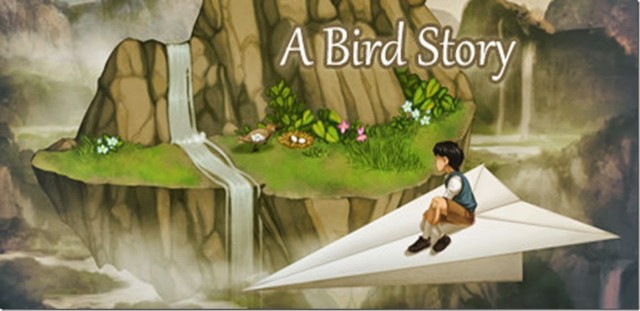Google “female avatar videogames” this week, and your search results will be full of articles about Ubisoft and their decision not to include female player-characters because it would “double the work.” There’s plenty that’s been said about the situation, both in their defense and not, but while I have plenty of opinions on Ubisoft’s reasoning (and their obvious foot-in-mouth syndrome), I’m more interested in what this discussion indicates about the gaming world and the way female characters’ roles are changing.
Nick Yee, a research scientist at (interestingly enough) Ubisoft, has some interesting studies involving avatars and player identification. One think Yee’s research doesn’t address (at least in the brief overview I found) is how these stats are impacted by gender. After all, the influx of female avatars, customizable or not, is a fairly new trend. For years, if women wanted to self-identify with their avatars, they were SOL. Now, however, there are a growing number of games that are beginning to offer the choice. It’s this growing trend that adds to the uproar against Ubisoft; their decision not to include female avatars in the latest Assassin’s Creed game seems like a step backwards compared to the growing number of developers heading in the opposite direction.
But as a side-note to the current discussion, I want to note that it’s not enough to just drop a female body into the mix. Ubisoft’s comment about the added work-load falls apart as far as physical character design, but sandbox or RPG games need to do more than simply offer breasts as a customization option. The real impact of avatar customization comes from seeing the game-world react to your choices. In the Elder Scrolls games, NPCs’ dialogue choices change based on your race. In Fallout 3, perks like “Black Widow” and “Lady Killer” impact your interactions with characters of the opposite sex. And in Dragon Age: Origins, your gender impacts the available romance options, as Morrigan and Alistair are heterosexual, while Leliana and Zevran can be romanced regardless of your avatar’s gender. The point is that the world (and your options) change based on the choices you’ve made. These changes aren’t always fair, particularly in the Elder Scrolls world where prejudice runs rampant, but they are immersive and (if done right) not game-breaking. Not all NPCs in the world should have the same biases, as in Christine Love’s Analogue: A Hate Story, where your gender choice impacts your interactions with one NPC, and has absolutely no impact on the other.
The rules change a bit for non-narrative-driven games, however. When immersion is no longer the goal, equality becomes the name of the game. Analogue games such as Legends of Andor and Kill the Overlord offer male and female images for all roles (the cards describing each character are double sided), while abilities stay exactly the same. The Sims games also program all sims to be sexually neutral. It’s your interactions with other Sims that begins to shape their preferences, rather than pre-set options. And the survival-comedy/horror game, Sir (Madam), You Are Being Hunted offers a gender choice that does absolutely nothing to the gameplay.
Assassin’s Creed obviously falls into the first category. In light of the interactive, immersive quality of the AC world, there is some justification for Ubisoft’s claim that it increases the workload. But that’s not the point. Game development is hard work. Every new option leads to a chain of new tasks that need to be developed and developed well if the game is going to be successful. What Ubisoft is saying is accurate, but what it really says is that the company didn’t deem that effort to be worth it.
We need all kinds of female avatars. We need female characters that are equal (in every way) to their male counterparts. We need non-customizable female-oriented stories (such as Mirror’s Edge). And we need customizable characters that impact the worlds they live in. Offering these options makes games richer, more accessible, and more representative of the world we live in. It’s not about appeasing a fringe group. If anything, immersive RPGs should be aiming for this more and more because it makes their games more real. And if that’s not a selling point, I don’t know what is.





2 thoughts on “Female Avatars: More Than Just a Pretty Face”
This is kinda tangential, but Dark Souls 2 is an interesting case of gendered avatars. For one thing, avatar customization is extremely deep for males and females; the available body types are all reasonably proportioned, and there is a slider for “Hormones” and “Beard” for both sexes. How you design your character has zero impact on the game, all characters are perfectly equal, and there seem to be no deviations in NPC interactions– they all just call you “undead.”
More interesting to me, though, is this weird feature available in the game’s starting zone: there is a coffin-like boat thing washed up on a beach, and if you climb inside, a message saying “The nature of your being has changed” pops up, then your character climbs back out. Turns out this changes your gender! Though it’s not very clear about that.
See, generally in the game your character will be covered from head to toe in huge crazy armor (at least that’s how I play), and the starting armor is a pile of rags that obscures the body entirely, so I went on playing for quite a while before I noticed that my initially-male character had breasts– the face and hair seemed basically the same. I just thought that was quite interesting, and wondered what the designers were trying to communicate by including that mysterious, unexplained coffin-boat.
I have never gotten into Dark Souls 2 because I think that I will either hate the constant dying or get hooked on the grind, but things like the coffin-boat makes it interesting.